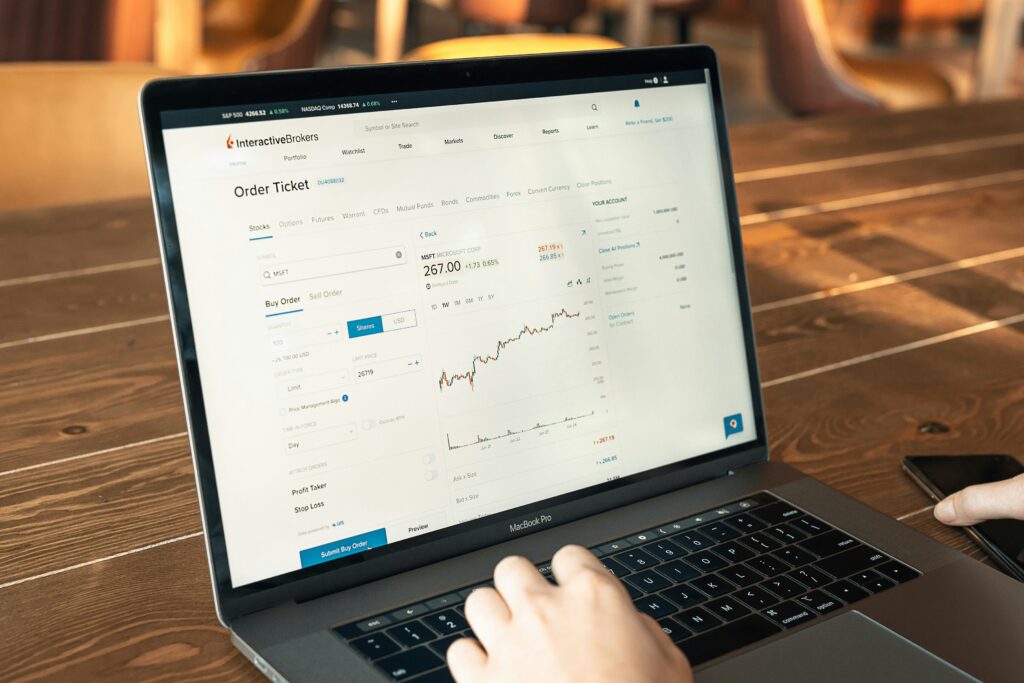Cut the Fluff: Why Engagement Matters More Than Opens
Let’s set the record straight—open rates are not the hill you want to die on. In 2024, they’re barely a pulse check. Apple’s Mail Privacy Protection and other privacy guardrails have made opens a murky, inflated metric. Sure, it might feel good to see a number go up, but what does it mean if no one’s clicking, replying, or buying?
Real engagement—the kind that moves revenue, builds trust, and drives action—is what actually matters. If a subscriber isn’t clicking, it means your message didn’t land. No curiosity sparked. No value felt. No response. That’s a dead end.
Creators and marketers who win aren’t chasing vanity numbers—they’re watching click-throughs, scroll maps, heat spots, and reply rates. They’re tracking what content leads to conversion, not just what subject line tricks someone into opening.
Here’s the harsh truth: if they’re not clicking, they’re not interested. Stop measuring attention. Start measuring action.
Tactic 1: Nail the First Line (It’s Not Just About the Subject)
Think of subject lines as the doorway—and preheaders as the sign telling people what’s inside. You need both to convert a scroll into a click. The subject line gets them to pause. The preheader gives them a reason to care.
Keep it clean. No tricks, no fluff. If you tease something in your subject, you better deliver it in the email. Audiences are sharper than ever—and more cynical. Bait-and-switch language doesn’t just tank your engagement, it damages trust long-term.
And if you’re not split-testing subject lines and preheaders, you’re leaving clicks on the table. One version might get ignored. Another might trigger a 40% lift in open rates. You won’t know unless you test. A/B testing isn’t optional anymore—it’s baseline strategy. Every subject line is a micro experiment in attention and intent. Own it.
Tactic 2: Segment or Die Trying
If you’re still sending the same email blast to everyone on your list, you’re not just behind—you’re invisible. People’s inboxes are brutal. Relevance wins, and one-size-fits-all emails lose. Hard.
Segmentation flips the game by cutting through the noise. Start simple: separate buyers from browsers, or new signups from long-time lurkers. Build from there—past clicks, purchase behavior, on-site actions. Even segment by interest tags from your content or lead-gen forms.
This isn’t theory. One B2C lifestyle brand used behavior-based segments to push restock notifications only to people who’d viewed that product category—and saw click-through rates spike by 63%. A SaaS company split users by feature usage and sent targeted tips for underused tools. Support tickets dropped. Retention went up.
The lesson: tailor your message to match their moment. Segmented, purposeful emails aren’t just nicer—they get opened, clicked, and actually read.
Tactic 3: Make It Look Personal, Even If It’s Not
Let’s be honest: opening an email that greets you with “Hi, [First Name]” feels about as personal as getting a form letter from your dentist. Personalized marketing has moved way past merge tags. Smart email strategy in 2024 leans hard into dynamic content blocks—think entire sections of an email that change depending on who’s reading. If a subscriber’s been bingeing your minimalist design articles, give them more of that. If they clicked on last week’s vintage fashion piece, shift the offer to fit. Treat that inbox like a conversation, not a broadcast.
And while you’re at it, change your tone. No buzzword bingo, no lifeless brand speak. Write like you’re talking to one person—not pitching to a boardroom. Show a little edge. Humor. Honesty. People are more likely to engage when they think a real human’s on the other side—because at the end of the day, that’s what builds trust.
Just because you’re automating doesn’t mean you should sound like a robot. Make it personal, make it dynamic, and above all, make it worth their time.
Tactic 4: Mobile-First or Bust
Most of your audience is reading emails with one hand and half an eye—on their phones, on the go. That means your email better load fast, read easy, and scroll clean. Long blocks of text? Dead weight. Oversized headers? Waste of screen space. Keep copy tight. Think short paragraphs, sharp lines, enough white space to breathe.
CTA buttons need to be finger-friendly. If someone has to zoom, swipe, or guess where to click, you’ve already lost. Make the button big enough, spaced well, and labeled clearly. It isn’t rocket science—it’s usability.
And skip the giant, slow-loading image headers. They might look great on desktop, but on mobile, they block important content and delay interaction. Lead with clarity, not a fancy design. Format like a minimalist: simple layout, quick load, clear message.
Mobile doesn’t mean limited. It means focused. Build for the small screen first, and everything else gets easier.
Tactic 5: Use Video (or at Least Act Like You Did)
Video is one of the most powerful tools in modern email marketing—but you don’t need full production to get results. You just need the illusion of video, delivered the smart way.
Capture Clicks with Thumbnails
Actual video playback in email clients is still hit or miss. But marketers have found a workaround that works every time: clickable thumbnails that look like video.
- Use a static image that mimics a paused video (include a play button overlay)
- Link it directly to a landing page, product demo, or embedded video reel
- Track the click-through rate (CTR) to see just how effective the visual bait is
Bonus: Thumbnails tap into visual curiosity. If it looks like a video, users instinctively want to watch.
Smart Linking Over Embedding
Embedding videos directly into emails can break formatting in certain inboxes. Instead:
- Host on YouTube, Vimeo, or your own platform
- Link the thumbnail to that page with clear intent (e.g., “See it in action” or “Watch the 30-sec demo”)
- Keep the user journey smooth: fewer clicks, more payoff
Want Proof It Works?
Still skeptical about using faux-video? See how top brands do it and get tips in our deep dive:
The Power of Video Marketing: Tips to Captivate Your Audience
Video—real or implied—doesn’t just increase clicks. It builds narrative, creates trust, and gives your email substance beyond words.
Tactic 6: Automate, But Don’t Sound Like a Robot
Email automation can save time, but without a human touch, it can send your audience running. The key? Systems that scale without sounding soulless. When done right, automated flows can deepen trust, revive interest, and keep your brand top-of-mind.
Build Trust with Smart Drip Sequences
Drip campaigns aren’t just about efficiency—they’re about building a relationship over time. Give value first, stay relevant, and don’t go straight into a sales pitch.
- Structure emails around the user journey, not your sales calendar
- Start with helpful content (guides, how-tos, problem solving tips)
- Slowly introduce offers over time to align with user readiness
- Maintain tone consistency: automated doesn’t mean robotic
Bring Cold Leads Back with Re-Engagement Flows
Not everyone will respond right away—but that doesn’t mean they’re gone for good. Re-engagement emails give you a second chance to trigger interest.
- Use subject lines that spark curiosity or acknowledge inactivity
- Offer something different: a new incentive, exclusive content, or insight
- Include a clear CTA: reignite the relationship or give them an exit
Tip: Add a survey link or quick poll to learn why they went dark. Insights lead to smarter content.
Timing Is More Than a Time Zone
When your emails land matters as much as what they say. Sending the perfect message at the wrong time can bury your best efforts.
- A/B test sending times for different segments (early morning vs. late afternoon)
- Respect time zones—automate delivery based on subscriber location
- Consider intent windows: follow up after downloads, purchase behavior, or event attendance
Your automation is only as good as the thought behind its timing. Go beyond scheduling—think context.
Tactic 7: Test. Everything.
If you’re guessing, you’re losing. Subject lines, CTAs, send times—they all need to be tested. Not once. Not twice. Ongoing. What worked last month might tank today, and the only way to find what clicks (literally) is to keep testing. A/B tests aren’t optional—they’re your map through the fog.
Heatmaps and click tracking can show you what your subscribers actually care about. Where they scroll, where they tap, and just as importantly, where they don’t. It’s not just about crafting better emails, it’s about learning how your audience thinks and behaves.
Here’s the bottom line: engagement doesn’t magically improve. You chase it. You analyze it. You earn it. So strip out assumptions, trust the data, and test ruthlessly.
Wrap-Up: Engagement Takes Work
Let’s be clear: your first few email campaigns won’t be flawless. Probably not your next few, either. That’s not a failure—that’s just how this works. Good email marketing is built on revision, not perfection. You send, you track, you learn, you tweak. Then do it again.
The only stable compass is user value. What do they care about? What helps them? What gets them to click and stay? Your data will show you—but only if you pay attention and respond.
Also, ditch the megaphone. People don’t want to be marketed at; they want to feel like someone’s talking to them, not selling something. So write like a person. If your email feels like a stiff press release or a cold pitch, your audience is already gone.
The takeaway? Make it useful. Make it human. Make it better, every single time.



